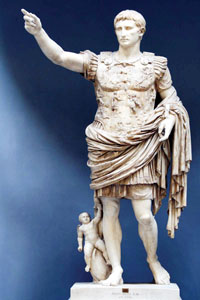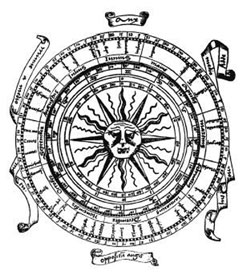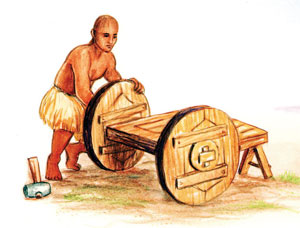Variety
When the year began in March
Do you know that there was an age or period of time when March was
the first month of the year? That was a long, long time ago, long before
the birth of Christ.
|

Animals go into hibernation in winter. |
In the ancient Roman calendar, March was the first month of the year
and the year had only 10 months, based on the changing appearance of the
Moon. The months had no names, only numbers according to their order in
the year.
The fifth month for instance was Quintus meaning five or (fifth) and
the next month was Sextus (six or sixth).
This 10-month calendar was as old as the city of Rome. It was used
from the time of Romulus, the founder of the city to which he gave his
name Roma.(In English we say Rome). That was 753 years before the birth
of Christ. It is 2008 years since Christ was born. So that is 2761 years
ago.
This calendar was in use for 707 years until it was changed by Julius
Caesar in 46 BC. (subtract 46 from 753 and the answer is 707).
When the calendar was changed, two months were added, making it a
12-month year. So, the 10th month in the old calendar became the 12th in
the new calendar, the ninth month became the 11th, the eighth month
became the 10th, the seventh month became the ninth and so on.
|

The city of Rome. |

Augustus Caesar. |
Latin was the language of ancient Rome and these months had Latin
names, like Quintus (fifth); Decem, which means 10, was given the name
for the last and 10th month of the year. Likewise, November comes from
the Latin Novem meaning nine, October from Latin Oct, eighth and
September from the Latin scpem.
As mentioned earlier in this article, the calendar was re-cast on the
orders of Julius Caesar who was the ruler of Rome. The year was divided
into 12 months of 30 and 31 days in alternate months. The two months
which were added were given names. The first month was named after Janus,
the God with two heads, one looking forward and the other backward.
|

An ancient Roman calendar. |
In Roman mythology, Janus was the God of Beginnings and the guardian
of gates and doors. So, naming the first month of the year after Janus
was meaningful and very appropriate.
Februaris, the name given to the next month, is from a latin word
which means to purify. It was the month when Romans purified themselves
for religious festivals in the coming months. The first month in the old
calendar and now the third is named after Mars the God of War in Roman
mythology.
Julius Caesar was born in Quintus, the third month in the old
calendar. He wanted this month named after him. So Quintus became July.
This is now the seventh month. Octavius or Augustus Caesar who became
ruler after Julius Caesar wanted a month with his name. So the next
month Sextus (sixth) was changed to August.
The Roman Senate proposed that November be named after the Emperor
Tiberius Caesar, the Emperor modestly refused to give his approval
saying, ‘what will you do if there are 13 emperors?’
|

A Sumerian. |
So, the months that follow August, the eighth month in the new
calendar, continue to be called by the old names which mean seventh,
eighth, ninth and tenth, although they are now the ninth, 10th, 11th,
and 12th months of the year.
Rome was the centre of civilization in Europe.
|

Julius Caesar. |
Everything or most things originated in Rome and spread throughout
Europe, and as with other customs, the old calendar was followed all
over Europe. For hundreds of years after the change from the 10-month
year to the 12-month year many countries in Europe continued to count
March as the first month of the year. England made the change from March
to January only in 1752, but Scotland did it earlier in 1660. Sweden
changed in 1753, a year after England, Germany and Denmark changed in
1700, but Russia made January 1 the beginning of the year only in 1918,
after the Communist revolution.
Why did the ancient Romans begin their year in March? They must have
had good reason to do so.
It is possible that they took the equinox as the beginning of a new
year. The equinox is on March 21. On that day the time between sunrise
and sunset is exactly 12 hours, because on that day the sun is directly
over the equator.
March 21 is the Spring Equinox and marks the beginning of spring in
the northern hemisphere. It is the time of the year when animals begin
to wake up from their winter hibernation and plants begin to put out
tender shoots. The Earth is waking up from the winter sleep.
|

Mars the God of War. |
Geece and wild ducks who have been spending the cold winter months in
the south where it is warm, are beginning to fly back.
Ancient people were keen observers of nature and the movements of the
Sun, Moon and stars. They were aware of the times when daylight and
darkness (day and night) were equal.
As long ago as 2000 Bc, the Sumerians in Mesopotamia calculated the
new year by the new moon nearest the spring equinox also called the
vernal equinox.
In Iran today the New Year is celebrated on the day of the equinox
(March 21). So like in ancient Rome, the Iranian year still begins in
March, according to the modern calendar.
- Sumana Saparamadu |


